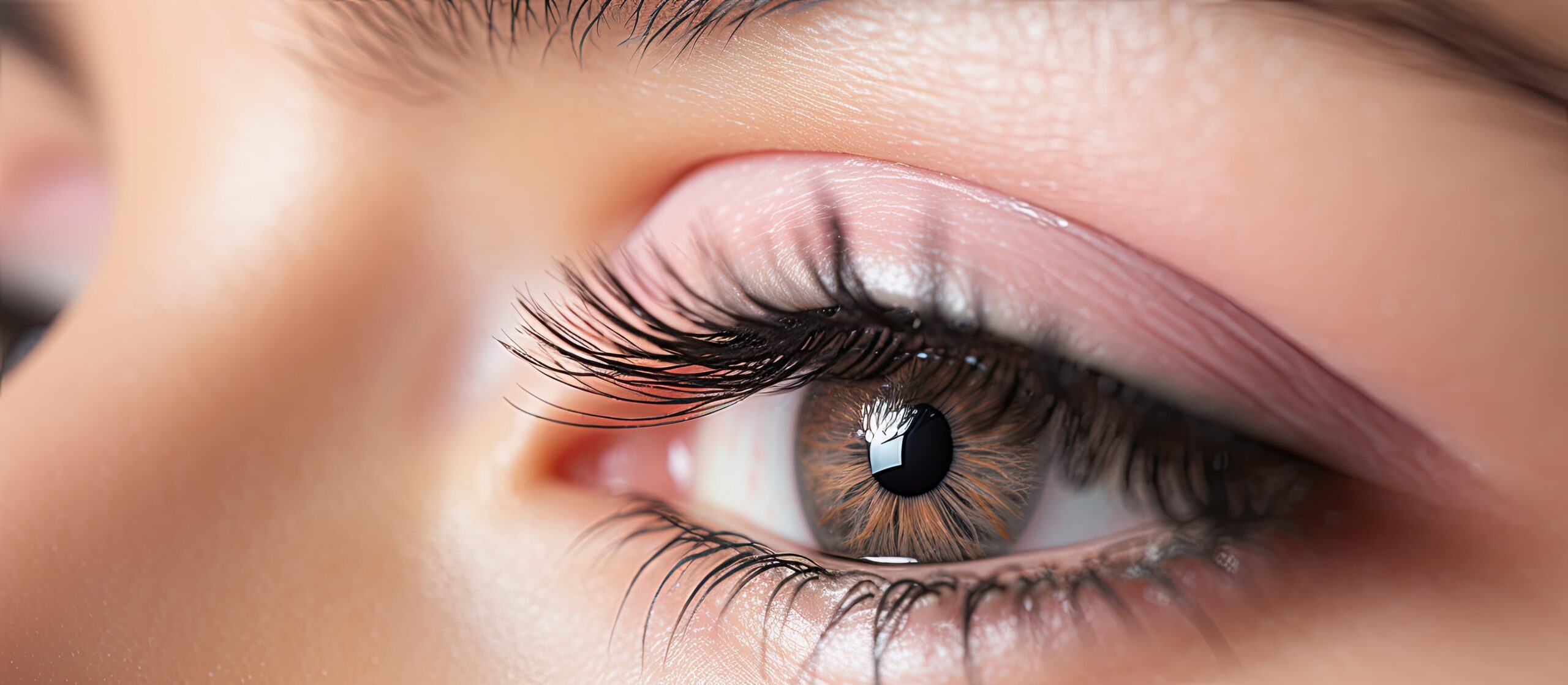Written by: Jill Health Team
Reviewed by: Sarah Bento De Sousa, PharmD RpH
Some individuals who transition into middle age and had dark brown eyes in their younger years, might notice a gradual fading of their eye color, potentially resulting in hazel eyes. Does that mean your eye color can change as you age? Does blue eye color become green?
Let’s explore the factors that determine eye color, and debunk common myths. From genetics to age-related changes and the impact of lighting, you’ll gain a clear understanding of what influences the colors of your eyes.
Whether you have brown eyes and wonder about their rarity or are intrigued by the captivating nature of hazel eyes, this article will answer your questions in a friendly and approachable tone.
We’ll touch on how eye color relates to certain health conditions and medications. By the end, you’ll have a comprehensive view of what defines your eye color and how it can be influenced by various factors.
Can Brown Eyes Turn Hazel?
The question of whether brown eyes can turn hazel is complex. Typically, eye color is genetically determined and remains consistent throughout life.
However, certain factors can cause brown eyes to appear hazel in specific circumstances. Lighting plays a crucial role in this perception.
Under bright sunlight or artificial lighting, brown eyes might exhibit a hazel tint due to the reflection and scattering of light.
Age-related changes can also slightly alter eye color, usually making them lighter, but a complete transition from brown to hazel is rare and usually indicates an underlying condition.
In some cases, medical conditions, treatments, or even trauma can lead to changes in eye color.
For instance, specific treatments for eye conditions like glaucoma can increase the amount of melanin in the iris, potentially shifting eye color.
Understanding these changes is vital, especially when considering treatments near the eyes, such as those described in this article on the safety of lash serums.
Myths and Facts Surrounding Hazel and Brown Eyes
There are numerous myths and misconceptions about eye color, especially concerning its changeability.
One common myth is that eye color can change dramatically with mood. While emotions can affect the size of the pupils, thereby altering the perceived color of the eyes, they do not cause the iris’s color to change.
Another myth is that diet or health supplements can change eye color; however, there is no scientific evidence to support these claims.
It’s crucial to differentiate between actual changes in eye color, which are rare and usually due to specific medical conditions or treatments, and changes in perceived color due to lighting or emotional states.
What determines the color of our eyes?
The color of our eyes is primarily determined by genetics. The spectrum of human eye colors, from deep brown to pale blue, results from complex genetic interactions.
These genes influence the amount and distribution of melanin, the pigment that gives color to our eyes, skin, and hair.
Consequently, the eye color we inherit from our parents varies due to differences in these melanin-related genes, resulting in colors ranging from brown and hazel to green, blue, and even uncommon shades like gray and amber.
Genetic Determination of Eye Color
The primary determinant of eye color is genetics. The human eye color spectrum, ranging from the darkest shades of brown to the lightest hues of blue, is the result of complex genetic interactions.
The parents’ genes play a crucial role, with multiple genes involved in determining the final color of the iris. These genes control the level and distribution of melanin, the pigment responsible for coloration in the eyes, skin, and hair.
Variations in these genes lead to the wide array of eye colors observed in humans, from brown and hazel to green, blue, and even rare colors like gray and amber.
Keep reading, because in this section we’ll go over the most common factors that determine your eye color.
Age-Related Changes
As individuals age, their eye color can undergo subtle changes. This alteration is primarily due to the gradual decline in pigment cells in the iris.
While the fundamental eye color usually remains the same, the hue might become lighter or lose some of its intensity.
For instance, brown eyes may lighten slightly, but it is unusual for them to transform entirely into another color like hazel.
These changes are a normal part of the aging process and are different from the significant color shifts that can result from medical conditions or injuries.
Environmental and Lighting Factors
Environmental factors, particularly lighting, significantly impact how we perceive eye color. Brown eyes might appear hazel or even greenish in bright sunlight or under certain artificial lights due to Rayleigh scattering, where the shorter light wavelengths are scattered, leaving longer wavelengths like red and yellow, which give a warmer tone to the eyes.
However, it’s important to note that these changes are perceptual rather than actual changes in eye color.
Health and Medical Conditions
Certain health conditions can lead to changes in eye color. Conditions such as Horner’s syndrome, heterochromia, and inflammations can alter the appearance of the iris.
Additionally, some treatments, particularly for eye diseases, can affect eye color. For example, prostaglandin analogs used in glaucoma treatment can increase melanin in the iris, potentially darkening the eye color over time.
Mood and Emotions
While mood and emotions can influence the appearance of the eyes by affecting pupil size, they do not change the iris’s color. Changes in pupil size can make the iris appear more prominent or more vibrant, but the underlying color remains the same.
What are Brown Eyes?
Brown eyes, characterized by a rich presence of melanin in the iris, are a globally dominant eye color. This pigment imparts a brown hue, varying in intensity from light to almost black.
The prevalence of brown eyes is significantly higher in people of Asian, African, or Hispanic descent, reflecting genetic inheritance.
The melanocytes in the iris, which produce melanin, are responsible for this coloration.
Brown eyes, seen in a majority of the world’s population, are often perceived as a common, yet deeply varied, eye color due to the spectrum of shades they encompass.
Interestingly, the melanin that colors the eyes is also involved in other cosmetic aspects, such as the effect of Latisse on eyelashes, as explained in this article about how Latisse works.
The melanin levels in the iris not only determine the depth of the brown color but also contribute to protecting the eyes from certain types of light, reducing the risk of eye diseases like cataracts.
How Rare Are Brown Eyes?
Contrary to being rare, brown eyes are the most prevalent eye color worldwide. This prevalence, however, is not uniformly distributed across all populations.
In regions like Asia and Africa, the dominance of brown eyes is more pronounced due to genetic factors. In contrast, in places like Northern Europe, lighter eye colors, such as blue and green, are more common.
Despite their commonality, the shades of brown eyes vary greatly, ranging from light amber to dark, almost black hues, contributing to their unique appeal.
Alongside eye color, other features like eyebrows also play a significant role in facial aesthetics. For those interested in enhancing their eyebrows, this guide on how to thicken eyebrows provides useful insights.
What is Hazel?
Hazel eyes are a captivating and less common eye color, primarily characterized by a blend of green and brown hues, often intermixed with gold and copper flecks.
This multi-colored aspect, which can change in different lighting conditions, is due to the varying concentration and distribution of melanin and Rayleigh scattering.
Hazel eyes can exhibit a remarkable variation in color, from a predominant green to a more brownish tint with gold or copper highlights, often forming a ring around the pupil.
The color of hazel eyes is also subject to changes influenced by lighting, clothing, and even mood, though these changes are more about perception than actual alteration in color.
Hazel eyes are most commonly found in populations with a mixture of ancestries, particularly European descent, making it a fascinating study in genetic diversity and inheritance.
Just as eye color can vary, so too can the safety and effectiveness of products used around the eyes. For those considering enhancing their eyelashes, understanding the safety of these products is crucial, as detailed in this discussion about the safety of lash serums.
How Rare Are Hazel Eyes?
Hazel eyes, while less common than brown eyes, hold a unique place in the spectrum of eye colors.
Their occurrence varies but is primarily seen among people of European descent. The rarity of hazel eyes can be attributed to the specific genetic requirements needed for this color to manifest.
Hazel eyes are particularly striking due to their multi-colored nature, which can seem to change under different lighting conditions, giving an illusion of the eyes “changing color.”
This rarity and the beauty of hazel eyes have often been romanticized in literature and media, contributing to their allure.
Key Takeaways
- Brown eyes, rich in melanin, are the most common eye color globally.
- Hazel eyes, less common, are characterized by a blend of green, brown, and sometimes gold or copper tones.
- Eye color is mainly determined by genetics, though it can change slightly with age or due to certain medical conditions.
- Environmental factors like lighting can affect the perception of eye color, but do not cause actual changes in color.
- Myths about eye color change are common but largely unfounded.
Frequently Asked Questions (FAQs)
Can Eye Color Change Due to Medical Conditions or Medications?
Yes, certain medical conditions or medications can lead to changes in eye color. For example, some treatments for glaucoma can increase the amount of melanin in the iris, leading to a darker eye color over time. Other conditions, such as Horner’s syndrome or certain types of eye inflammation, can also affect eye color.
Can Someone Have Two Different Colored Eyes?
Yes, a condition called heterochromia results in two different colored eyes. This can be congenital (present from birth) or acquired due to injury, illness, or as a side effect of certain medications. The uniqueness of each eye in such cases can be striking, offering a fascinating glimpse into the complex genetics of eye color.
How Does Eye Color Impact Vision or Sensitivity?
Generally, eye color does not significantly impact vision. However, individuals with lighter eye colors, such as blue or green, may experience more sensitivity to light. This is because they have less melanin in their irises to shield their eyes from bright light.
In contrast, darker eyes, like brown or hazel, tend to offer more protection against harsh lighting conditions. This protective aspect is an important consideration, especially when discussing eye care and the use of products like lash serums, as detailed in this article about the safety of lash serums.





